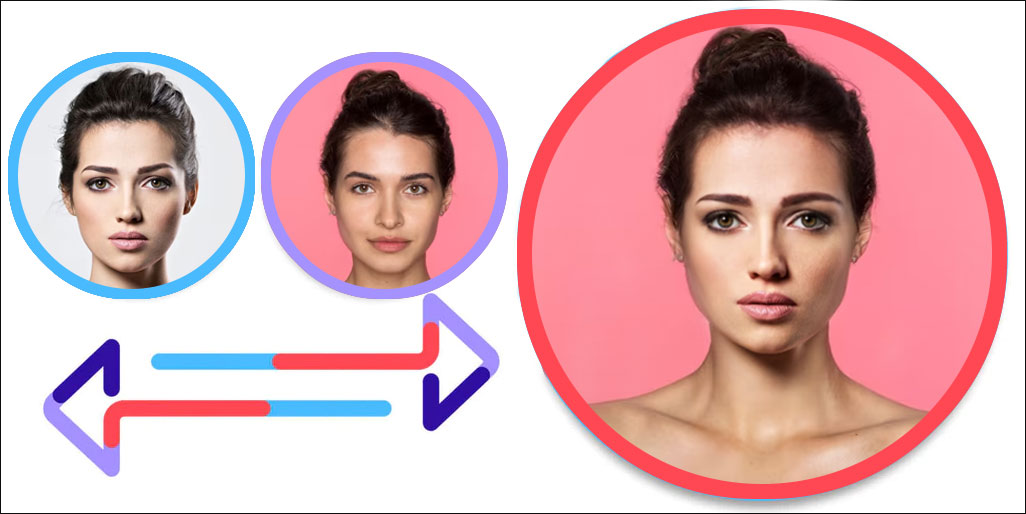The art of photography extends beyond capturing the perfect shot. With software like Adobe Photoshop, photographers and designers have the power to enhance and alter images to meet their vision, including the delicate task of changing skin tone. Whether the goal is to correct lighting issues, create a specific aesthetic, or ensure consistency throughout a series, mastering the art of skin color change in Photoshop is essential. This comprehensive guide will walk you through the steps and techniques to skillfully adjust skin tone, ensuring your edited photos look natural and true to life.
How to Start with Changing Skin Color in Photoshop?
Understanding the Photoshop Interface for Beginners
Before diving into the complex process of changing skin color, familiarize yourself with the Adobe Photoshop interface. This comprehensive software can be overwhelming for beginners, but understanding its layout and basic functions is the first step towards mastering any edit. Specifically, for skin tone adjustments, focus on locating the adjustment layer options, layers panel, and the color sampler tool. These components will be integral in the process of skin color changes.
Selecting the Right Tools for Skin Tone Adjustment
In the vast toolbox of Photoshop, certain tools and features, including the hue and saturation adjustment or the eyedropper tool, are essential for changing skin color accurately. The adjustment layer is perhaps the most critical, allowing for non-destructive edits. Within this feature, the hue/saturation adjustment slider, curves adjustment layer, and selective color adjustment are pivotal for skin tone alteration. Gaining proficiency in these tools enables precise control over the editing process, ensuring realistic and desirable outcomes.
Setting Up Your Image for Skin Color Change
Before you start to adjust skin tone in Photoshop, proper preparation of your image is necessary. Ensure your photo is correctly exposed and in RGB color mode to apply color corrections effectively. Using a sample image with a clear view of the subject’s face and an area that’s representative of their skin tone will enable more accurate adjustments. Employing layer masks can also facilitate targeted edits, preventing changes from affecting the entire image indiscriminately.
Step by Step Guide to Change Skin Tone in Photoshop
Using the Hue/Saturation Adjustment Layer
To initiate the skin color change, start with the hue/saturation adjustment layer. This feature allows you to shift the skin tone color in Photoshop by moving the hue slider, easily accessed through the drop-down menu. However, subtlety is critical; drastic shifts can result in unnatural skin colors, so it’s important to use the hue and saturation adjustments carefully for a natural look. Adjusting the saturation can either enhance or mute the intensity of the color, while the lightness slider controls the brightness. Remember to sample the skin to target the correct color range and avoid affecting unintended areas of the image.
Editing with the Curves Tool for Precise Skin Tone Correction
For more detailed control over the skin tone correction, the curves adjustment layer is invaluable. By manipulating the curve, you can adjust the exposure and contrast, which indirectly affects the skin color. Isolating specific color channels (RGB) allows for nuanced adjustments to the red, green, and blue components of the skin tone, facilitating a precise match to the desired color.
Leveraging the Camera Raw Filter for Overall Tone Improvement
In addition to targeted color adjustments, the Camera Raw filter offers a versatile solution for an overall tone improvement. This tool can enhance the clarity, exposure, and saturation of the entire photo, indirectly affecting the skin tone for a more natural appearance. Understanding how to balance these adjustments with the specific edits for skin color, using tools like the eyedropper tool for the exact skin tone, is key to achieving a harmonious and aesthetically pleasing result.
Matching Skin Tones: Advanced Techniques in Photoshop
How to Select Skin Areas Accurately
Accurate selection of skin areas is pivotal for changing skin color in Photoshop. Utilizing the color range selection tool allows for precise control over which parts of the image are edited. By sampling the skin tone and adjusting the fuzziness slider, you can refine the selection to include variations in skin color while avoiding non-skin areas. Fine-tuning the selection with layer masks ensures that the adjustments only affect the desired regions.
Blending and Correcting Skin Tones for a Natural Look
Achieving a natural look when changing skin tone requires a thoughtful blend of corrections. Utilizing the blend mode options within layers can help merge adjustments subtly. Particularly, the “Color” blend mode is effective in maintaining the original texture while changing the color. Matching skin tones across different parts of the body may require multiple selective corrections, ensuring a consistent and believable skin tone throughout the image.
Utilizing the Color Balance Adjustment for Perfect Skin Tone
The Color Balance adjustment layer is a powerful tool for fine-tuning the skin tone color in Photoshop. By selectively adjusting the cyan, magenta, and yellow components, it is possible to correct unwanted color casts and achieve the ideal skin tone. This adjustment layer, particularly the hue and saturation layer, is especially useful in scenarios where the lighting has affected the skin color, allowing for natural corrections that align with the desired outcome.
Tutorial: Correct and Change Skin Color Like a Pro
Step by Step Tutorial on change skin color in Photoshop
This tutorial will guide you through the essential steps to change skin tone in Photoshop like a professional. Starting with the sample image, open the color adjustments and select the hue/saturation layer. Sample the skin and adjust the sliders to achieve the preliminary color change. Next, refine the adjustment with the curves tool, focusing on the specific color channels needing correction. Use the Camera Raw filter for an overall tone adjustment, ensuring the skin color change blends seamlessly with the rest of the image by selecting the skin areas carefully. Finally, employ the color balance adjustment to fine-tune the color to perfection, ensuring an exact skin tone match.
Learning How to Edit and Deselect Properly
Editing and deselecting properly are critical skills in Photoshop, especially when working on areas as sensitive as skin tone. After applying adjustments, always review the changes thoroughly to ensure they appear natural. If an adjustment affects an unintended area, utilizing the history tool to undo or the layer mask to hide the effect is crucial. Properly deselecting areas after making adjustments ensures that further edits do not unintentionally alter them.
Key Moments in Changing Skin Tone Color
Several key moments define the process of changing skin tone color in Photoshop. Identifying the initial skin tone and what needs to change is the first step. During the editing process, constantly compare the adjustments to the original to maintain a reference point, employing tools like the foreground color selection for accuracy. Paying close attention to the impact of each adjustment on the overall image is imperative, especially in preserving the natural look of the subject’s face. Finishing touches, such as sharpening the features or adjusting the contrast, can enhance the realism of the color change, ensuring an exact skin tone match.
Want to Learn Adobe Photoshop for Changing Skin Tone?
Exploring Adobe Tutorials for Skin Color Change
For those looking to delve deeper into the capabilities of Adobe Photoshop for changing skin color, Adobe offers comprehensive tutorials. These resources are designed to cater to both beginners and advanced users, providing insights into the tools and techniques essential for proficient skin tone editing, including how to select the skin accurately. Exploring these tutorials can significantly enhance your understanding and ability to execute complex color changes in Photoshop.
Advanced Courses To Change Skin Tone in Photoshop
Beyond the basic tutorials, advanced courses are available for those aspiring to master the art of skin color change in Photoshop. These courses delve into intricate details of color theory, selection techniques using tools like the eyedropper tool, and editing precision, equipping learners with the skills to tackle any skin tone adjustment project confidently. Enrolling in these courses can elevate your Photoshop expertise to a professional level.
Tips and Tricks for Efficient Color Correction
Efficient color correction in Photoshop relies on a combination of technique and creative intuition. Always start with a clear goal for the skin tone change, and use the appropriate adjustment layers, such as hue and saturation, to achieve it. Understanding the interplay of light and color is essential, as is practicing selective editing to maintain realism. Remember, subtlety is key—overcorrection can lead to unrealistically altered images. With practice, patience, and a creative eye, anyone can learn how to change skin color in Photoshop to produce beautifully enhanced photographs.
Q: What transcript should I follow to quickly learn how to change skin color in Photoshop?
A: To quickly learn how to change skin tone in Photoshop, start by opening the target image you want to edit. Then, create a new adjustment layer by clicking the “Create new fill or adjustment layer” icon at the bottom of the layers panel and select “Curves” or “Hue/Saturation.” Use the targeted adjustment tool or the sliders to adjust the tonal range and saturation to achieve the desired skin color. It’s a quick way to get an exact color modification by using the info panel to monitor the changes.
Q: How can I select the skin accurately in Photoshop for color change?
A: To accurately select the skin in the image you want to edit in Photoshop, use the Quick Selection Tool or the Object Selection Tool. Adjust the brush size in the options bar to fit the area you’re working with. You can add to your selection by holding down the Shift key, or subtract from it by holding the Alt key. After selecting, refine the edge by clicking on ‘Select and Mask’ to ensure you only target the skin. Create a new layer to make non-destructive edits to the skin tone.
Q: Can you teach me how to change skin color using the color balance tool?
A: To change skin color using the color balance tool in Photoshop, first, select the layer of the image you want to edit. Then, create a new adjustment layer and choose “Color Balance.” This feature allows you to adjust the colors within the shadows, midtones, and highlights of your image. Adjust the sliders to achieve the desired skin tone. It helps to use a reference image to get an exact match. Remember to adjust the opacity of the adjustment layer to blend the new skin tone naturally with the rest of the image.
Q: What is the significance of using the info panel when changing skin tones in Photoshop?
A: The significance of using the info panel when changing skin tones in Photoshop lies in its ability to provide real-time feedback on the color changes you’re making. By monitoring the CMYK or RGB values, you can get an exact match or adjustment to the desired skin tone. This ensures that the skin color you apply looks natural and consistent across different areas of the skin, especially when working with complex tonal ranges and lighting conditions.
Q: How can I use the Curves panel to change skin color in Adobe Photoshop?
A: To use the Curves panel to change skin color in Adobe Photoshop, open the Curves adjustment layer by clicking the adjustment layer icon at the bottom of the Layers panel and select “Curves.” Use the targeted adjustment tool within the Curves panel to click and drag on the portion of the image you want to adjust, directly affecting the curve. For skin tones, you might adjust the RGB curves to add warmth or coolness, depending on the desired skin color. This method is very effective for fine-tuning the tonal qualities of the skin.
Q: What is a quick way to match skin tones across different parts of an image?
A: A quick way to match skin tones across different parts of an image is to use the Eyedropper Tool to sample the skin color you want to match. Select the Brush Tool, set the blending mode to “Color,” and adjust the opacity to gently paint over the areas you want to correct. This method uses the color of the sampled area to unify skin tones. Additionally, using a new layer for these adjustments can help maintain the original image qualities without permanent alteration.
Q: Can I use Adobe Illustrator techniques to change skin tone in a raster image?
A: While Adobe Illustrator is primarily designed for vector graphics, you cannot directly use Illustrator techniques to change skin tone in a raster image, such as a photograph. However, you can use Photoshop for raster image edits, including skin tone changes, due to its advanced pixel-based editing features. For vector artwork or illustrations in Illustrator, you might simulate skin color changes by adjusting fill colors, but for photographs or detailed raster artwork, using Photoshop is the recommended approach.
Q: How does the concept of tonal ranges play a role in change skin color in Photoshop?
A: The concept of tonal ranges is crucial when changing skin color in Photoshop because it affects how light or dark the skin appears in addition to its color hue. Adjusting the tonal range involves modifying the highlights, midtones, and shadows to achieve a more realistic and desired skin tone. Tools such as Levels, Curves, and Brightness/Contrast allow you to make these tonal adjustments. Proper manipulation of tonal ranges ensures that the skin color looks natural under various lighting conditions in the image.





